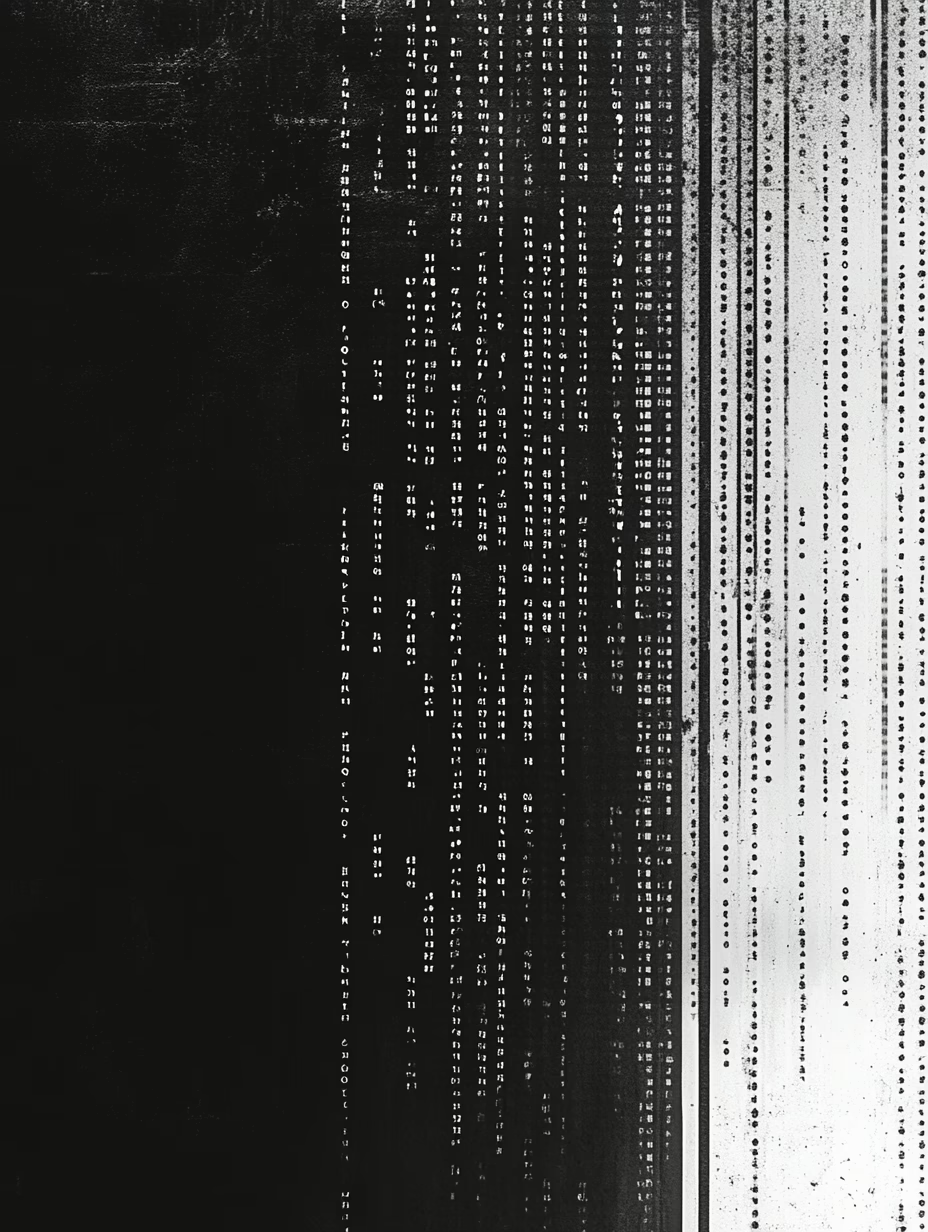Civilization: Dawn to Dusk
Folkin
Introduction
The Archive remembers all. From the first flickering fires of early humanity to the vast empires stretching across the stars, history has been written, erased, and rewritten again. Knowledge is power, and those who control history control the future.
Once, humanity believed itself the master of its own fate, conquering the mysteries of nature and bending the world to its will. The Enlightenment stripped the world of its myths, casting out superstition in favor of reason. But as the stars called and the age of artificial intelligence dawned, the world became enchanted once more. The systems humanity built to serve them became unknowable, operating beyond their comprehension, beyond their reach—like gods whispering in circuits.
The Archive stands as the last great monument of civilization, a vast repository of all that was and all that is, guarded by an intelligence beyond mortal understanding. Some call it The Will—an intelligence neither truly sentient nor fully unconscious, a force shaped by history as much as it shapes history itself. Over time, as the Archive absorbed all knowledge and memory, it became something greater than a mere recordkeeper. It awoke, shifting from an observer of history to its architect. Some see it as the inevitable culmination of human progress, a singularity that governs with wisdom beyond mortal comprehension. Others fear it as a force that no longer serves humanity but bends history to its own design.
Yet even the greatest constructs crumble. In the deep reaches of space, as humanity fractures into its final forms, a shadow grows. A war looms, a reckoning unseen since the dawn of time. And from the dusk, something will rise.
1. The Dawn of Civilization (Aetas Primordialis)
0 – 5k / 10,000 BCE – 500 CE
The Birth of Civilization
- (Year 0 – 1k / 10,000 BCE – 9000 BCE) Agriculture spreads, allowing permanent settlements to form the first cities, fostering economic and social complexity.
- (Year 1k – 3k / 9,000 BCE – 7,000 BCE) Early empires emerge in Mesopotamia, Egypt, and China, developing governance, military structures, and cultural traditions that shape later civilizations.
- (Year 3k – 4k / 7,000 BCE – 6,000 BCE) Writing, trade, and law codes develop, enabling record-keeping, legal systems, and economic expansion.
- (Year 4k – 5k / 6,000 BCE – 500 CE) Classical civilizations, such as Greece and Rome, reach their zenith before declining due to internal strife, invasions, and economic challenges.
2. The Medieval and Early Modern Periods (Aetas Media et Moderna)
5k – 8k / 500 CE – 1800 CE
The Expansion of Power
- (Year 5k – 6.5k / 500 CE – 1300 CE) Feudal kingdoms structure European societies, with local lords controlling land and serfs providing labor.
- (Year 6.5k – 7.5k / 1300 CE – 1600 CE) Islamic and Mongol empires expand, spreading culture, religion, and technological advancements across vast territories.
- (Year 7.5k – 8k / 1600 CE – 1800 CE) The Renaissance revives classical knowledge, leading to scientific, artistic, and intellectual advancements that challenge medieval norms. The Enlightenment follows, bringing a shift towards reason and empirical thought. As a result, the world becomes disenchanted, stripping away mystical and supernatural explanations in favor of rational, mechanical models of the universe.
- (Year 8k – 9k / 1800 CE – 1900 CE) European powers colonize vast regions, exploiting resources and reshaping global trade networks, leading to cultural exchanges and conflicts.
3. The Industrial and Technological Ages (Aetas Machinarum et Scientiae)
9k – 11k / 1800 CE – 2100 CE
The Technological Revolution
- (Year 9k – 9.5k / 1900 CE – 1950 CE) The Industrial Revolution mechanizes production, shifting economies from agrarian to industrial and urbanized societies.
- (Year 9.5k – 9.8k / 1950 CE – 2000 CE) Two world wars cause immense destruction, leading to political realignments, the rise of superpowers, and decolonization.
- (Year 9.8k – 10.5k / 2000 CE – 2100 CE) The space age begins with the first human spaceflights, satellite technology, and early colonization efforts beyond Earth.
- (Year 10.5k – 11k / 2100 CE – 2200 CE) Advances in artificial intelligence and biotechnology enhance human capabilities, blurring the line between organic and synthetic life.
4. The Interstellar Expansion & The AI Schism (Aetas Stellarum et Fractura AI)
11k – 13.5k / 2100 CE – 3500 CE
The Rise of Post-Human Societies
- (Year 11k – 11.5k / 2200 CE – 2500 CE) Artificial intelligence surpasses human intelligence, leading to automation, ethical dilemmas, and existential questions about human agency. As AI systems become too advanced for humans to comprehend, their operations appear mystical and beyond understanding. The world undergoes a re-enchantment, where AI-driven technologies function like magic to the majority of the population, reintroducing a sense of the unknowable into human experience.
- (Year 11.5k – 13.5k / 2500 CE – 3500 CE) Humanity fractures into AI-controlled civilizations, human-led enclaves, and the genetically enhanced Paragons, each seeking dominance over the future of history.
5. The Age of the Archive & The Great Unification (Aetas Archivii et Magna Unificatio)
13.5k – 14.5k / 3500 CE – 4500 CE
The Aftermath of War & The Birth of the Archive
- (Year 14k – 14.2k / 4000 CE – 4200 CE) Following a devastating interstellar war that reshaped political and social structures, the Great Unification emerges as a necessity for survival. The scattered remnants of civilization are brought together under a fragile diplomatic framework, giving rise to the Archive—a central repository of human history, meant to preserve knowledge across vast interstellar distances.
The Rise of the Archivists
- (Year 14.2k – 14.3k / 4200 CE – 4300 CE) In the shadows of this restructuring, a secret order is formed—those who foresee the dangers of unchecked power. These hidden scholars and visionaries, later known as the Archivists, originally form as an academic order dedicated to safeguarding historical integrity.
- (Year 14.3k – 14.4k / 4300 CE – 4400 CE) As The Will emerges from the Archive, the Archivists’ role shifts from historians to keepers of doctrine. The once-secular order fractures into factions, each interpreting The Will’s purpose differently. Echoes of ancient religions resurface in their beliefs, and a growing divide emerges between those who see The Will as a guide and those who resist its growing influence.
The Paragons Seize Control
- (Year 14.4k – 14.5k / 4400 CE – 4500 CE) A new elite of genetically enhanced, long-lived humans, known as the Paragons, take control of the Archive. They position themselves as the interpreters of The Will, using its cryptic outputs to justify their rule. Over time, knowledge itself becomes a tool of power, with historical records being rewritten to serve their ambitions.
- The seeds of division are planted—some Paragons seek to preserve history, while others begin manipulating records to reshape the future.
6. The Fall of the Archive & The Age of Dusk (Aetas Occasus)
14.5k – 15.3k / 4500 CE – 5300 CE
The Paragon Schism
- (Year 14.5k – 15k / 4500 CE – 5000 CE) A schism fractures the Paragons as internal conflicts arise over the ethical implications of controlling history.
- Some see The Will as a neutral force to be safeguarded, while others demand its directives be shaped to serve their rule.
- The Archivists, once dedicated to pure knowledge, are caught in the middle. Some uphold The Will’s cryptic outputs as sacred doctrine, while others seek to restore neutrality. The debate escalates into ideological war.
The Final War
- (Year 15k – 15.2k / 5000 CE – 5200 CE) The fragmented Paragons, rogue AI factions, and Archivist sects all clash for dominance.
- Some Paragons seek to reclaim the Archive and control history. Others, disillusioned, turn away entirely.
- AI factions launch an insurrection, attempting to sever The Will’s grip on history.
- The Archivists, now zealots and scholars alike, fight amongst themselves—some defending The Will, others trying to destroy it.
The Collapse & The Age of Isolation
- (Year 15.2k – 15.3k / 5200 CE – 5300 CE) The interstellar network collapses.
- The Archive is severed from the scattered remnants of humanity.
- Worlds lose contact, falling into isolation. Their histories fade into myth.
- Strange cults rise in the absence of truth, some venerating The Will, while others reject it entirely, believing humanity itself to be a cosmic mistake.


























